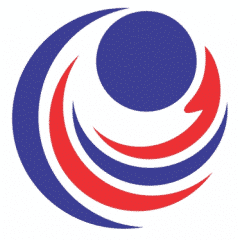Athlete’s Foot: What is it and how to prevent it?
Athlete’s foot or tinea pedis or fungal infection of foot (foot fungal)
Athlete’s Foot is a fungal infection of the foot which occurs in men, women, and children of all ages. It is not restricted to only athletes. Rather, it is so named as athletes generally sweat more. Moreover, they wear tight-fitting shoes. This predisposes the foot to the humid conditions inside the shoes. As a result, they are more prone to developing fungal infections. Fungal spores are present in the environment around us. On finding suitable moist and humid conditions, these spores germinate and give rise to fungal growth. They are composed of fine filamentous hyphae. Multiple hyphae coalesce to form a mycelium.
The athlete’s foot is a form of superficial fungal infection called dermatophytes (dermato-skin, phytos-to grow) which are generally restricted to the epidermis and dermis. They feed on keratin protein found in nails (tinea unguis), skin (named according to the body part involved) and hair. They are commonly responsible for causing Jock Itch (in the groin, also called tinea cruris), over the scalp (tinea capitis) or generalized (over the body, tinea corporis).
Athlete’s foot: How does it develop?
This condition has certain predisposing factors which makes some people more vulnerable to contracting it. Immunodeficiency states, chronic debilitating conditions like Diabetes mellitus and palmoplantar hyperhidrosis (generally idiopathic) have been implicated. Besides, poor hygiene practices like failure to periodically change socks (in case of Athlete’s foot) and undergarments (in other cases of dermatophytosis) are responsible. Athlete’s foot is contagious (through direct contact). Sharing of contaminated personal towels, shoes may result in the spread of disease to healthy contacts. Walking barefoot in public places like swimming pool locker rooms, showers, gymnasiums, etc are also documented risk factors.
athlete’s foot symptoms
People with Athlete’s foot generally experience the following:
- Painful blisters between the toes and fingers of the feet.
- Mild itching or a pruritic rash that has a burning sensation. It may ulcerate or bleed with a sanguineous or serous discharge.
- Dry soles and feet which may crack and develop fissures.
- Thick discolored nails that may crumble and easily be peeled off.
- Complications include spread to other sites (by repeated scratching of the infected site) for e.g. to the groin (tinea cruris). It may also spread adjacently to the nails causing tinea unguis and weakening of attachment to the nail bed. People with Diabetes or on immunosuppressant drugs may have chronic non-healing ulcers as well.
Diagnosing Athlete’s Foot
The characteristic rash developed along with the clinical presentation is enough to make a presumptive diagnosis of the Athlete’s foot. However, the treating physician may order a skin test for microscopic examination.
Skin scrapings are examined under a 10% KOH mount (Potassium hydroxide) which stains the fungal mycelium but spares the epidermal cells of the skin.
athlete’s foot treatment
Maintaining feet hygiene is of utmost importance.
Wearing soft, comfortable cotton socks and changing them every day is beneficial. One must avoid occlusive rubber/vinyl shoes which lead to retention of heat and promote fungal growth. Dabbing the feet dry after a bathe and ensuring that they are dried is also recommended.
For some individuals who perspire excessively, antiperspirants like 20% aluminium chloride (Drysol) help reduce the sweating. Medical management includes treatment with topical antifungal creams, oral antifungal medications, and powders. They include clotrimazole, luliconazole, sertaconazole creams. Oral capsules include griseofulvin, itraconazole, ketoconazole, ciclopirox. Ketoconazole soaps are available as well. Besides, clotrimazole powder is also available for topical application.
Topical steroid creams are contraindicated. They may worsen the infection and lower the body’s immune defenses to fight against the invading fungal organisms. They are primarily used for treating noninfectious causes of athlete’s foot.
Treatment must at least be continued up to one month and one week after the disappearance of visible lesions of the disease to prevent the recurrence of latent disease.

Excellent team ɑnd fantastic technology